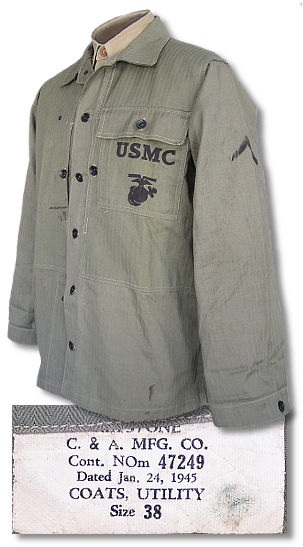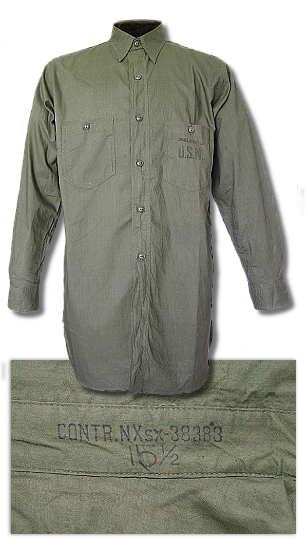The Army, Navy, and USMC clothing contract databases are brought to you as a result of a special project to develop useful search tools to better understand the production history of the uniforms worn by US forces during the WW2 era. The development of these databases is an ongoing project that involves finding and recording thousands of contract records. In order to maximize the usefulness of these records, information was painstakingly drawn from a number of different sources and combined together. Some of these sources include:
- Lists of major war supply contracts.
- Contract labels from actual clothing items.
- Price lists of clothing and equipment.
- Procurement station lists.
- Quartermaster clothing catalogs and circulars.
- Tables of equipment and clothing allowances.
Combining these resources allows, at the minimum, the creation of a useful record that includes the contractor name and location, specific clothing item produced, the date the contract was awarded, and the full contract number including procuring station number and location. In addition, other information may be included, when available, such as specification numbers, stock numbers, and sizing. Fundamental criteria for searches are allowed including by contractor name, item name, and contract number. This enables the user to search for something very specific or across a broader range. It is important to note that not every clothing contract resides in these databases, nor does every item type, specification number, contract number, etc. The databases will continue to grow as new records become available and can be added.
Support for the continued development of these databases is greatly needed.
How the databases can be used
Clothing contract information along with other identifiers, when entered into a relational database, can be organized in useful ways to help us to better understand the historical context of an item, or even assist in determining its originality. For example, the item name and/or specification number displayed along with a range of contract dates can help us understand when an item was produced thus providing a good clue as to when it was worn. A specific type of item displayed along with its associated specification numbers and dates can help us understand the evolution of a particular clothing line when compared with either preceding or subsequent items. Stock numbers can help identify clothing where the item name is absent from the label, or they can reveal a size when the size label has faded or is missing. There are many ways in which this information can ultimately be used; such as narrowing down a time when a period photograph was taken, or even helping to recreate history with accuracy. It is with such intentions that these databases were created.
| ARMY DATABASE FIGURES | |
|---|---|
| LAST UPDATE: | |
| CONTRACTS: | |
| MANUFACTURERS: | |
| CLOTHING TYPES: |
| USMC DATABASE FIGURES | |
|---|---|
| LAST UPDATE: | |
| CONTRACTS: | |
| MANUFACTURERS: | |
| CLOTHING TYPES: |
| US NAVY DATABASE FIGURES | |
|---|---|
| LAST UPDATE: | |
| CONTRACTS: | |
| MANUFACTURERS: | |
| CLOTHING TYPES: |

